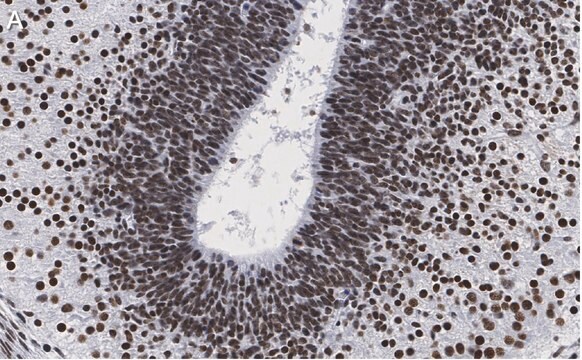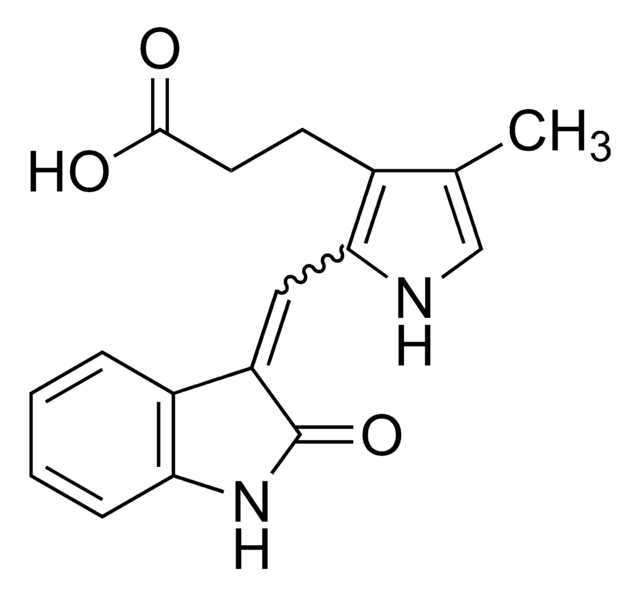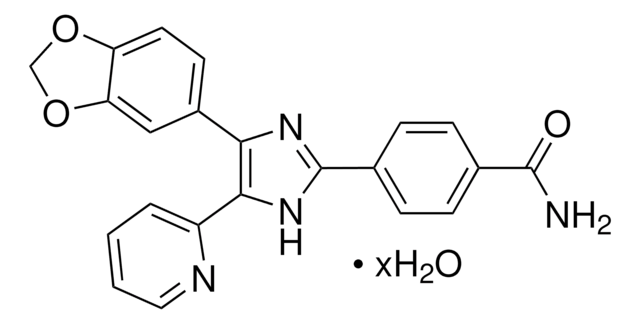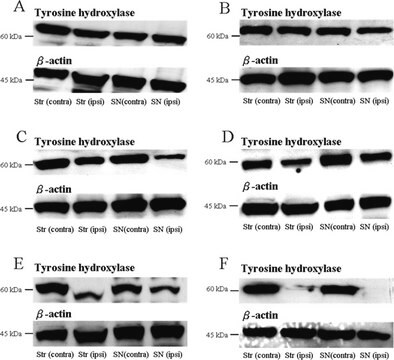AB10533
Anticorpo anti-LMX-1
serum, from rabbit
Sinonimo/i:
LIM homeobox transcription factor 1, alpha, LIM/homeobox protein 1.1, LIM/homeobox protein LMX1A
About This Item
Prodotti consigliati
Origine biologica
rabbit
Livello qualitativo
Forma dell’anticorpo
serum
Tipo di anticorpo
primary antibodies
Clone
polyclonal
Reattività contro le specie
mouse, hamster
Reattività contro le specie (prevista in base all’omologia)
hamster (based on 100% sequence homology)
tecniche
western blot: suitable
Isotipo
IgG
N° accesso Genebanck
N° accesso UniProt
Condizioni di spedizione
wet ice
modifica post-traduzionali bersaglio
unmodified
Informazioni sul gene
hamster ... Lmx1A(101839559)
mouse ... Lmx1A(110648)
rat ... Lmx1A(289201)
Descrizione generale
Specificità
Immunogeno
Applicazioni
Epigenetica & funzione nucleare
Marcatori neuronali & gliali
Qualità
Western blotting: una diluizione 1:1.000 di questo anticorpo ha rilevato LMX-1 in 10 µg di lisato di tessuto testicolare di topo.
Descrizione del bersaglio
Stato fisico
Stoccaggio e stabilità
Raccomandazioni per la manipolazione: una volta ricevuto il prodotto e prima di rimuovere il tappo, centrifugare la microprovetta e miscelare delicatamente la soluzione. Suddividere in aliquote in provette per microcentrifuga e conservare a -20°C. Evitare ripetuti cicli di congelamento e scongelamento che potrebbero danneggiare le IgG e compromettere le prestazioni del prodotto.
Risultati analitici
Lisato di tessuto testicolare di topo
Note legali
Esclusione di responsabilità
Non trovi il prodotto giusto?
Prova il nostro Motore di ricerca dei prodotti.
Raccomandato
Codice della classe di stoccaggio
10 - Combustible liquids
Classe di pericolosità dell'acqua (WGK)
WGK 1
Certificati d'analisi (COA)
Cerca il Certificati d'analisi (COA) digitando il numero di lotto/batch corrispondente. I numeri di lotto o di batch sono stampati sull'etichetta dei prodotti dopo la parola ‘Lotto’ o ‘Batch’.
Possiedi già questo prodotto?
I documenti relativi ai prodotti acquistati recentemente sono disponibili nell’Archivio dei documenti.
Il team dei nostri ricercatori vanta grande esperienza in tutte le aree della ricerca quali Life Science, scienza dei materiali, sintesi chimica, cromatografia, discipline analitiche, ecc..
Contatta l'Assistenza Tecnica.







